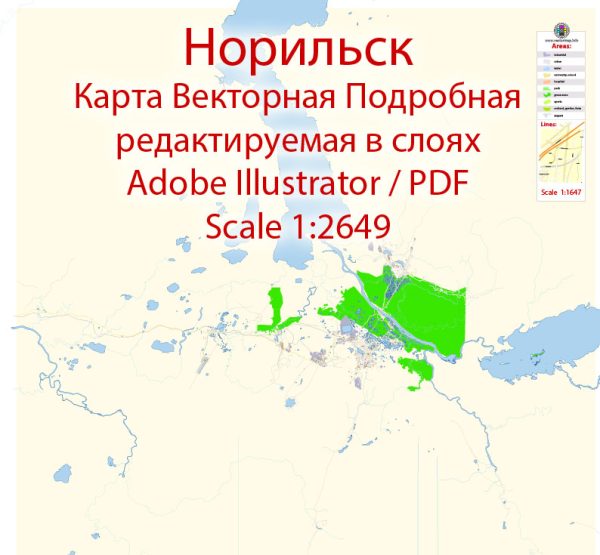Norilsk is a city located in the Krasnoyarsk Krai region of Russia, and it is one of the northernmost cities in the world. The history of Norilsk is closely tied to its development as an industrial center, particularly in the extraction and processing of minerals, primarily nickel and palladium. Here is an overview of the history of urban development in Norilsk:
- Formation and Early Years (1930s-1940s):
- Norilsk was officially founded in 1935 as a result of the discovery of rich nickel deposits in the area. The city’s establishment was part of the Soviet Union’s efforts to develop its industrial base.
- During the 1930s and 1940s, the city experienced rapid growth due to the construction of mining and metallurgical enterprises. Forced labor, including that of Gulag prisoners, played a significant role in the development of the city.
- Industrialization and Mining (1950s-1980s):
- Norilsk became a major center for mining and metallurgy, with extensive extraction of nickel, copper, cobalt, platinum, and palladium. The city’s industrial complex, including the Norilsk Nickel plant, became one of the largest in the world.
- The harsh Arctic climate posed significant challenges to the city’s development, but technological advancements allowed the extraction and processing of minerals to continue.
- Urban Infrastructure and Challenges:
- The city’s urban infrastructure was built to withstand the extreme Arctic conditions. Norilsk’s architecture is characterized by Soviet-era functionalism, with large apartment blocks, industrial facilities, and infrastructure designed to endure severe weather conditions.
- The city faces environmental challenges due to industrial activities. Pollution from mining and metallurgical processes has had significant ecological consequences in the region, leading to efforts to address environmental concerns.
- Post-Soviet Era (1990s-Present):
- With the dissolution of the Soviet Union in 1991, Norilsk, like many other Russian cities, underwent economic changes. The transition to a market economy brought both opportunities and challenges, impacting the city’s industrial complex and population.
- The city continues to be a major center for the mining and metallurgical industry, with Norilsk Nickel remaining a key player in the global metals market. Efforts have been made to modernize and address environmental issues.
- Population and Culture:
- Norilsk’s population consists of a diverse mix of ethnicities, drawn to the city for work in the mining and metallurgical industries. The city has developed its own unique cultural identity, influenced by the challenging Arctic environment and the industrial nature of its economy.
Despite its industrial significance, Norilsk has faced environmental challenges and has been the focus of efforts to mitigate the impact of industrial activities on the surrounding ecosystem. The city’s history is a testament to the complex relationship between industrial development, environmental concerns, and the resilience of its population in the face of extreme conditions.


 Author: Kirill Shrayber, Ph.D.
Author: Kirill Shrayber, Ph.D.